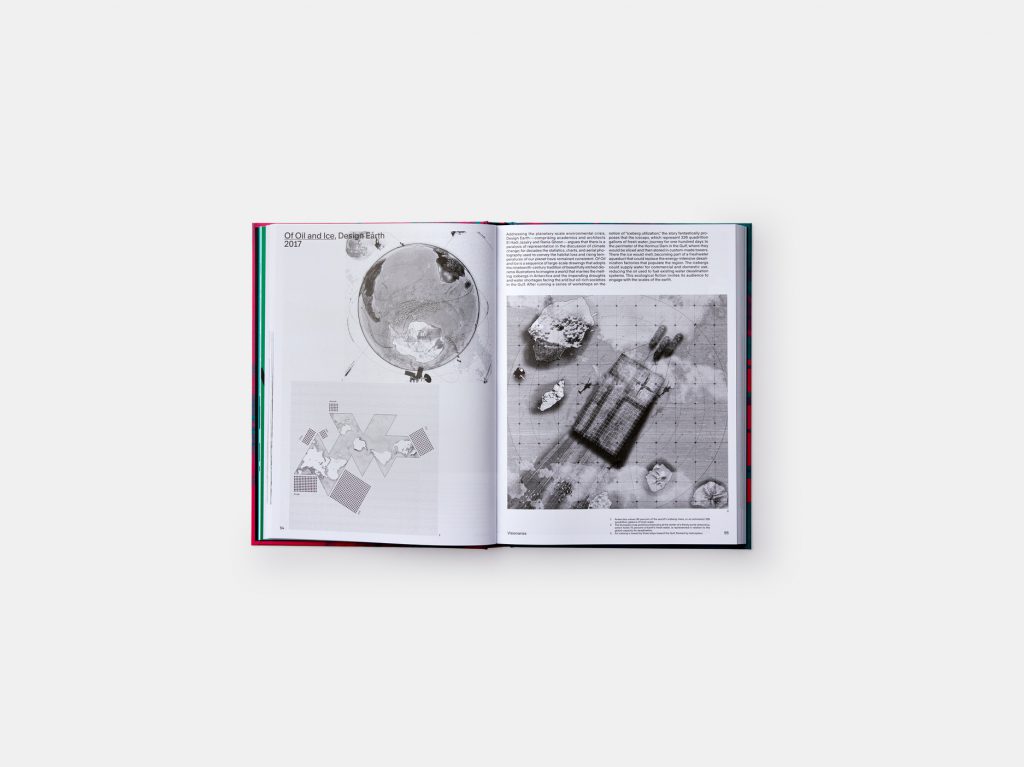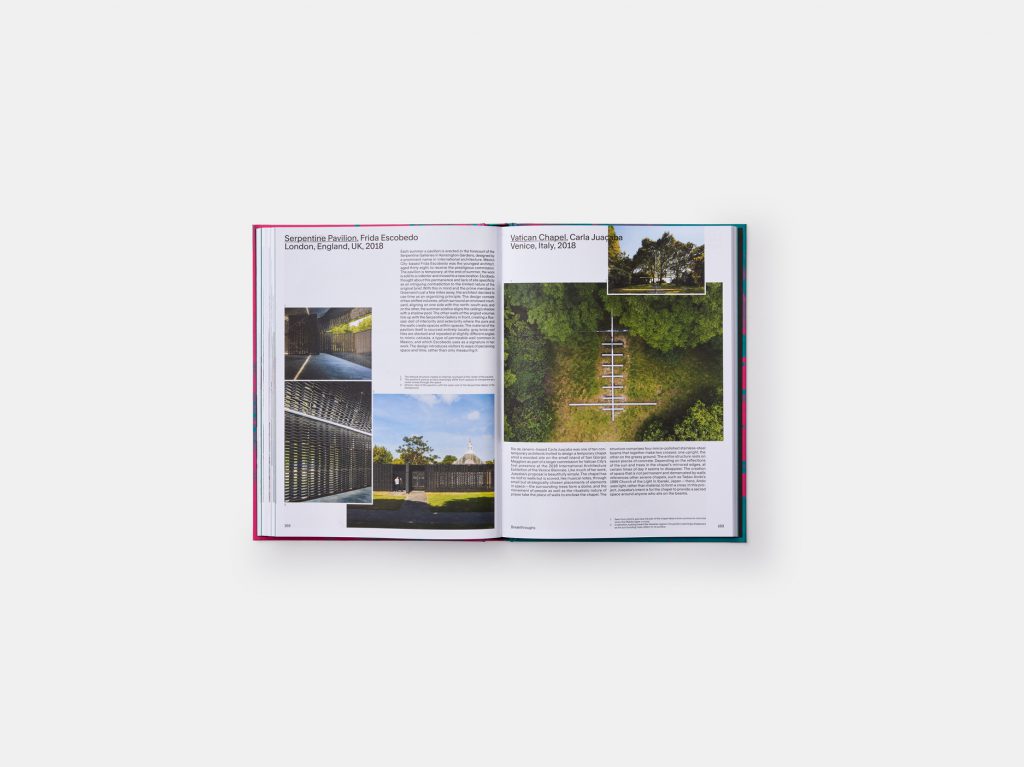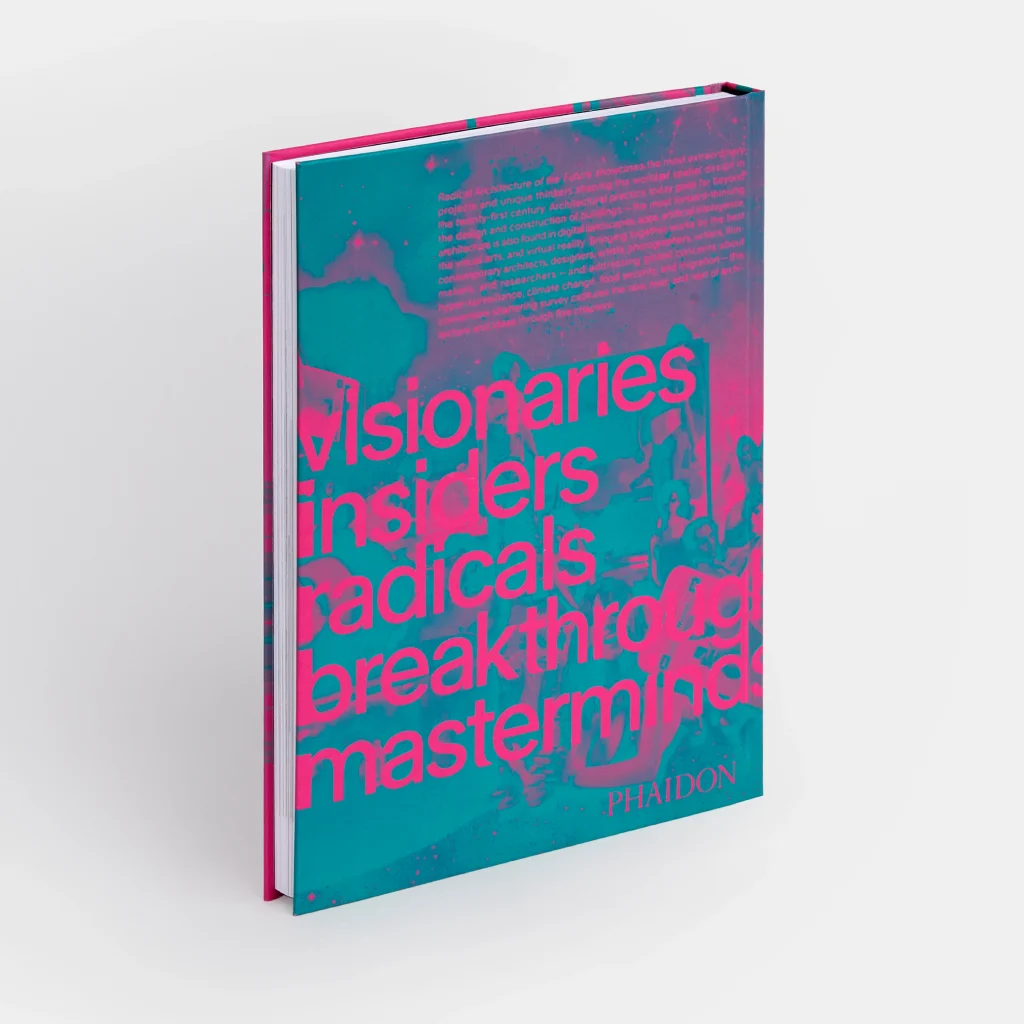In her latest book, Radical Architecture of the Future, curator and architecture critic Beatrice Galilee, questions the role of future architecture, possibilities of new design applications beyond current imagination and the most radical take we could accept.

เมื่อภัณฑารักษ์และนักวิจารณ์ทางสถาปัตยกรรมร่วมสมัยอย่าง Beatrice Galilee ตั้งคำถามถึงบทบาทของสถาปัตยกรรมในอนาคต ความเป็นไปได้ของทิศทางงานออกแบบที่เราอาจคาดไม่ถึง และความสุดโต่งระดับไหนที่เรายอมรับได้ไว้ในหนังสือเล่มล่าสุด Radical Architecture of the Future โดยสำนักพิมพ์ Phaidon ในฐานะผู้เขียน Beatrice จึงชวนสำรวจความเคลื่อนไหวจากผลงานกว่า 79 ชิ้น ในช่วงรอบสองทศวรรษที่ผ่านมาที่อาจเรียกได้ว่าส่วนใหญ่อยู่นอกเหนือจากสถาปัตยกรรมกระแสหลัก ปรากฏอยู่ทั้งการสร้างจริงหรือผลงานเชิงความคิดและการทดลองที่อาจไม่ได้สร้างจากหลากหลายแหล่ง และก้าวข้ามไปถึงผลงานศิลปะ การออกแบบแอปพลิเคชัน เกม และแอนิเมชัน ภาพยนตร์ งานเขียนเชิงวิชาการ รวมไปถึงการทดลองด้านอวกาศ
Galilee จัดหมวดหมู่การนำเสนอในหนังสือออกเป็น 5 บทประกอบด้วย Visionaries นำเสนอตัวอย่างผลงานเมื่อกระบวนการทำงานของนักออกแบบร่วมกับหลายสาขาวิชาชีพหรือจากมุมมองอื่นจะทำให้เห็นถึงบทบาทของสถาปัตยกรรมที่สร้างผลกระทบต่อสังคมได้มากขึ้นเช่นผลงานของ Rotor DCในเบลเยี่ยมหรืองาน Design Earth ของ El Hadi Jazalry และ Rania Ghosn ส่วนในบท Insiders เป็นการนำเสนอผลงานของสถาปนิกที่มีชื่อเสียงอย่าง Heatherwick Studio, Elemental หรือ Amateur Architecture Studio และ Studio Gang ที่รูปธรรมของงานสถาปัตยกรรมพยายามสร้างความหมายนอกเหนือไปจากลายเซ็นของผู้ออกแบบ แต่ส่งผลต่อคนและสภาพแวดล้อมในบริบทพื้นที่ที่ผลงานนั้นๆ ตั้งอยู่

ในบท Radicals ชวนมองย้อนกลับมายังสถาปัตยกรรมและปฏิบัติการเชิงพื้นที่ผ่านสายตาของศาสตร์แขนงอื่นๆเช่นผลงานของศิลปินอย่าง Cao Fei, Mishka Henner หรือฉากทัศน์เมือง Wakandaในภาพยนตร์ Black Pantherโดย Hannah Beachlerในขณะที่ Breakthroughs เน้นกระบวนการทำงานของสถาปนิกรุ่นใหม่ที่ค้นคว้าทดลองกับวัสดุต่างๆร่วมกับบริบททั้งในเมืองและชนบทอย่าง SO-IL, Assemble, Anna Heringer, Frida Escobedo หรือ Ensamble Studio เพื่อค้นหาหนทางในการสร้างแบบใหม่ๆ ที่น่าสนใจ พร้อมตอบคำถามทางสิ่งแวดล้อมหรือเศรษฐกิจไปพร้อมกันก่อนจะปิดท้ายด้วยผลงานของนักคิดทฤษฎีและนักทดลองจากสาขาวิชาชีพอื่นๆอย่าง Donna Haraway, David OReilly หรือ Space Enabled ไว้ในบทสุดท้าย Masterminds

ความหลากหลายของผลงานที่รวบรวมไว้ในหนังสือเล่มนี้จึงน่าสนใจสำหรับการสร้างบทสนทนาปลายเปิดและตั้งคำถามถึงความน่าจะเป็นของสถาปัตยกรรมและปฏิบัติการเชิงพื้นที่ในอนาคตโดยที่ไม่จำกัดอยู่เฉพาะแวดวงสถาปนิกเท่านั้นแต่รวมถึงผู้คนในสาขาอาชีพอื่นๆ ที่เป็นทั้งผู้ร่วมสร้างและใช้ประโยชน์จากสิ่งแวดล้อมสรรค์สร้างรอบตัวเรา
As author, Beatrice explores architectural movements from more than seventy-nine architectural works from the past twenty years, the majority of which could be considered as non-mainstream. It consists of a range of works that exist in the real world as well as conceptual or experimentalones. Works come from various sources including applications in art, video games, animation design, films, academic works and even space experimentation.
The book is divided into five chapters, each one delving into and discussing different categories of works. The first, ‘Visionaries’, defines design processes and the collaboration between designers and experts from various disciplines offering differing perspectives that provides for a broader range of view on the impact that architecture has on society. Works shown in this section include Rotor DC’s work in Belgium and Design Earth by El Hadi Jazalry and Rania Ghosn.
Chapter two, ‘Insiders’, includes works of famous architects and studios such as Heatherwick Studio, Elemental, Amateur Architecture Studio, and Studio Gang. The application of architectural abstract form here attempts to not only creates meaning representing the designers’ signature but extends further into the realms that affect individuals and their environments in the context in which they operate. Chapter three ‘Radicals’, invites the reader to look back at architecture and spatial design practices through the lenses of other disciplines. Works here include those produced by artists Cao Fei and Mishka Henner, as well as the urban scenerio of ‘Wakanda’ from the film ‘Black Panther’ produced by Hannah Beachler.
The fourth – Breakthroughs’ – emphasize the working process of a new generation of architects and design studios such as SO-IL, Assemble, Anna Heringer, Frida Escobedo and Ensemble. Here they clearly experiment with the use and application of different materials in both urban and rural contexts seeking new and interesting methods of construction while simultaneously answering questions regarding the built environment and impact on the economy. ‘Masterminds’, is the final chapter and deals with works of theorists and experimenters such as Donna Haraway, David OReilly, and Space Enabled involving themselves in other related subject matters.

The diversity collected in this book opens the mind to interesting open-ended discussion that questions the validity of architecture and spatial design practices today and the perceived possibilities of design applications and their role in the future. This is not only significant for architects and designers, but also for those in other subject areas who are both co-creators and co-benefactors of our built environment.



